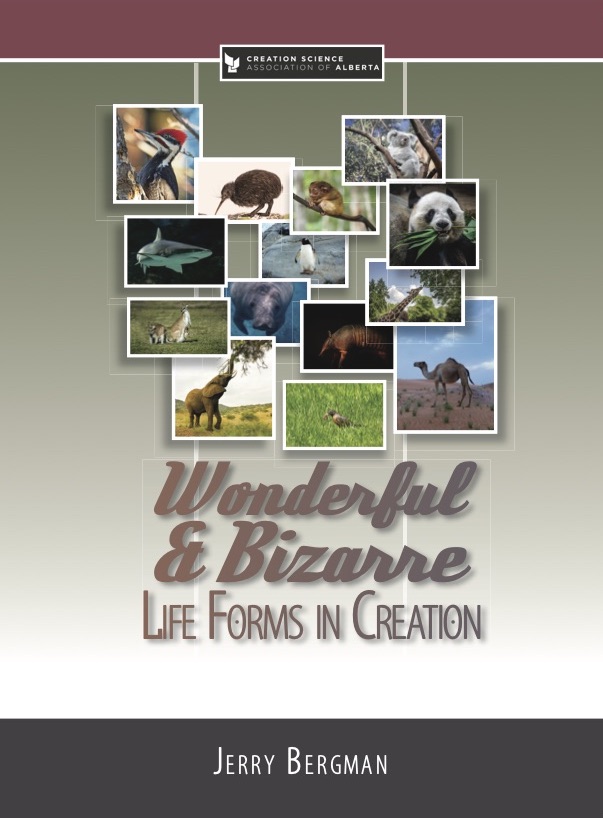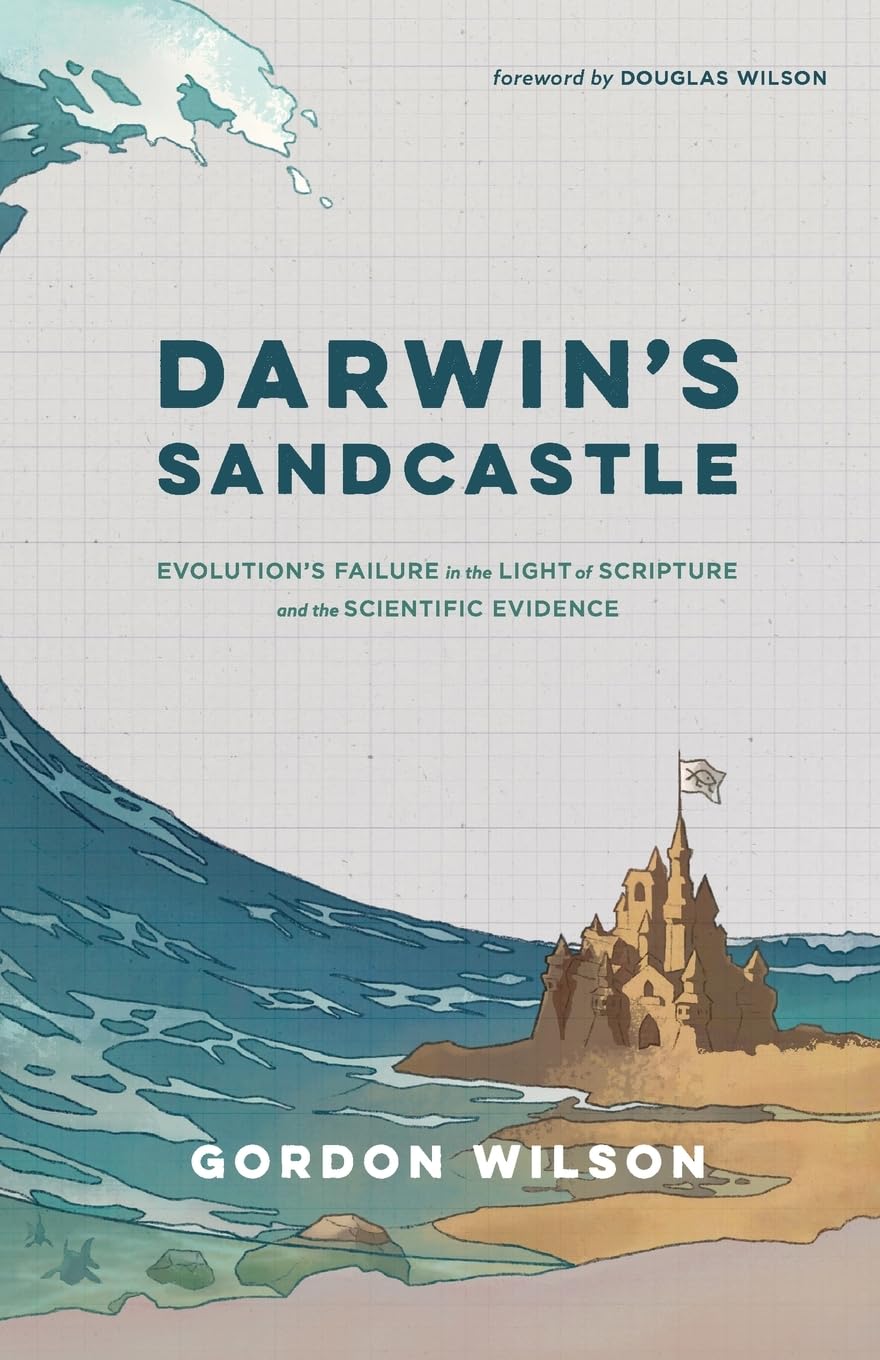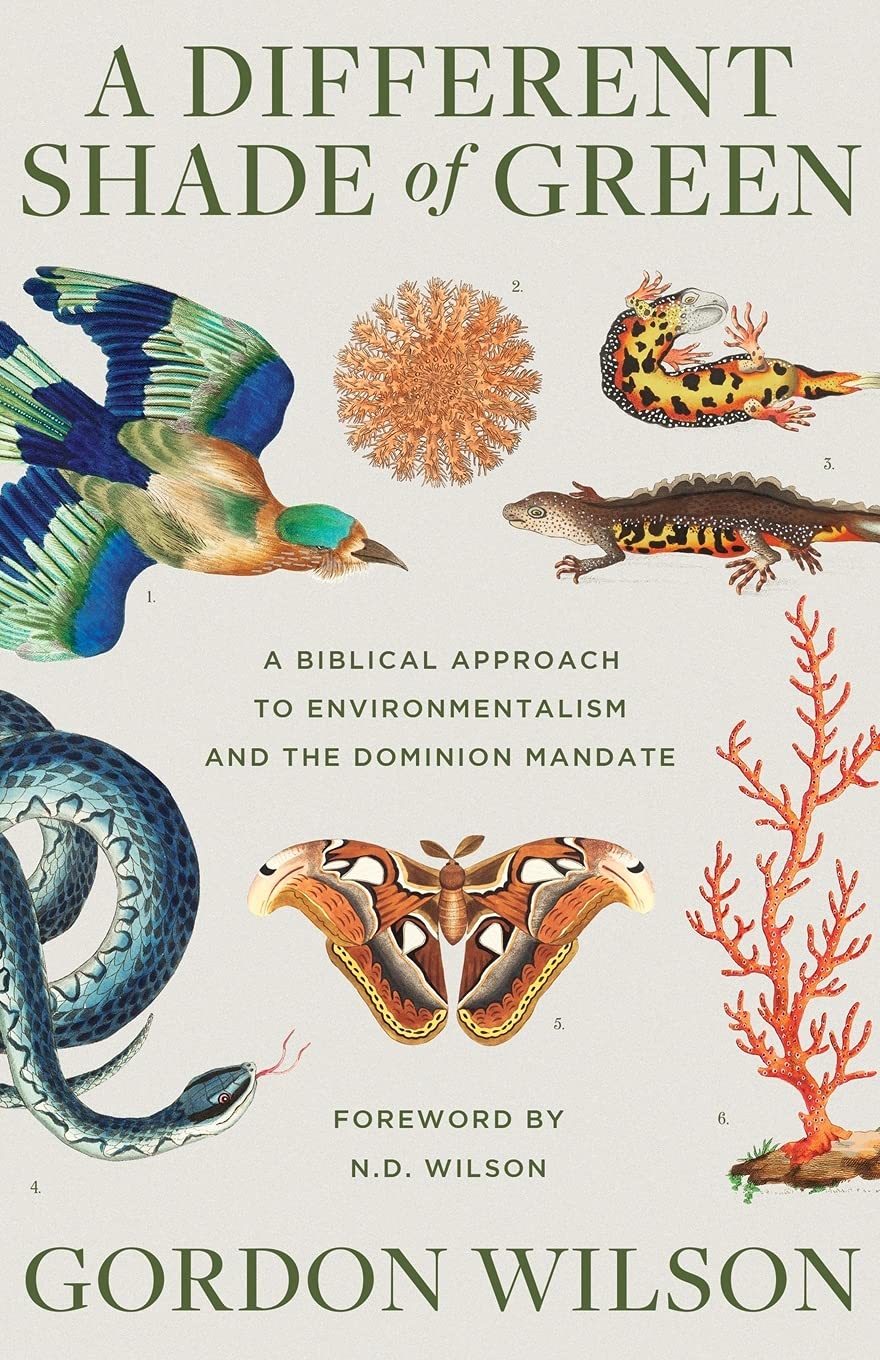FEATURED BOOKS AND DVDS
Paperback / $22.00 / 138 Pages / full colour
EES or extended evolutionary synthesis alternatives
Many biologists are dissatisfied with the shortcomings of neo-Darwinism, a theory which was developed during the first half of the twentieth century when the molecular foundation of life was almost entirely unknown. These biologists have therefore turned to alternative explanations such as evo-dev (Evolutionary Developmental Biology). These new people have proposed that mutations in genes that control embryonic development, might have a big impact on the resulting body plans.
The main proposal is that mutations affecting the early stages of embryonic development can cause “stable, heritable, large-scale changes in animal body plans.” [Meyr, Gauger and Nelson in Theistic Evolution edited by J. P. Moreland et al. 2017. Crossway. p. 263] But there is one major problem with the proposal for early changes in embryonic development. It doesn’t work. Thus “early-acting body plan mutations invariably generate embryonic lethals, that is, dead animals incapable of further evolution.” [p. 264] The upshot is: “Major change is not viable, viable change is not major.” [p. 264]
Master genes control cascades of events leading to development of an entire organ or indeed a whole creature. Some evo-devo proponents propose that random changes accidently form new sequences that would activate different genes and thus result in a new feature. These master switches are called genetic regulatory networks. ( GRNs) These are stunningly complex.
The problem with looking for new body plans from dGRNs, is the same as for evo-devo theory in general. It does not work. Thus, Meyer in Return of the God Hypothesis (2021) declares: “Yet all available observational evidence shows that dGRNs do not tolerate changes or perturbations to their basic control systems.” [p. 314] Mutations affecting dGRNs either result in no impact or catastrophic loss of body part or life itself. In order to build new body plans, an organism would need new dGRNs and these are just too complex to manipulate successfully.
The bottom line is that evo-devo may seem to be an appealing new explanation for evolution, but observations on developing embryos render this theory dead in the water.
Order OnlinePaperback / $6.00 / 55 Pages
EES or extended evolutionary synthesis alternatives
Many biologists are dissatisfied with the shortcomings of neo-Darwinism, a theory which was developed during the first half of the twentieth century when the molecular foundation of life was almost entirely unknown. These biologists have therefore turned to alternative explanations such as evo-dev (Evolutionary Developmental Biology). These new people have proposed that mutations in genes that control embryonic development, might have a big impact on the resulting body plans.
The main proposal is that mutations affecting the early stages of embryonic development can cause “stable, heritable, large-scale changes in animal body plans.” [Meyr, Gauger and Nelson in Theistic Evolution edited by J. P. Moreland et al. 2017. Crossway. p. 263] But there is one major problem with the proposal for early changes in embryonic development. It doesn’t work. Thus “early-acting body plan mutations invariably generate embryonic lethals, that is, dead animals incapable of further evolution.” [p. 264] The upshot is: “Major change is not viable, viable change is not major.” [p. 264]
Master genes control cascades of events leading to development of an entire organ or indeed a whole creature. Some evo-devo proponents propose that random changes accidently form new sequences that would activate different genes and thus result in a new feature. These master switches are called genetic regulatory networks. ( GRNs) These are stunningly complex.
The problem with looking for new body plans from dGRNs, is the same as for evo-devo theory in general. It does not work. Thus, Meyer in Return of the God Hypothesis (2021) declares: “Yet all available observational evidence shows that dGRNs do not tolerate changes or perturbations to their basic control systems.” [p. 314] Mutations affecting dGRNs either result in no impact or catastrophic loss of body part or life itself. In order to build new body plans, an organism would need new dGRNs and these are just too complex to manipulate successfully.
The bottom line is that evo-devo may seem to be an appealing new explanation for evolution, but observations on developing embryos render this theory dead in the water.
Order OnlineHardcover / $52.00 / 433 Pages
EES or extended evolutionary synthesis alternatives
Many biologists are dissatisfied with the shortcomings of neo-Darwinism, a theory which was developed during the first half of the twentieth century when the molecular foundation of life was almost entirely unknown. These biologists have therefore turned to alternative explanations such as evo-dev (Evolutionary Developmental Biology). These new people have proposed that mutations in genes that control embryonic development, might have a big impact on the resulting body plans.
The main proposal is that mutations affecting the early stages of embryonic development can cause “stable, heritable, large-scale changes in animal body plans.” [Meyr, Gauger and Nelson in Theistic Evolution edited by J. P. Moreland et al. 2017. Crossway. p. 263] But there is one major problem with the proposal for early changes in embryonic development. It doesn’t work. Thus “early-acting body plan mutations invariably generate embryonic lethals, that is, dead animals incapable of further evolution.” [p. 264] The upshot is: “Major change is not viable, viable change is not major.” [p. 264]
Master genes control cascades of events leading to development of an entire organ or indeed a whole creature. Some evo-devo proponents propose that random changes accidently form new sequences that would activate different genes and thus result in a new feature. These master switches are called genetic regulatory networks. ( GRNs) These are stunningly complex.
The problem with looking for new body plans from dGRNs, is the same as for evo-devo theory in general. It does not work. Thus, Meyer in Return of the God Hypothesis (2021) declares: “Yet all available observational evidence shows that dGRNs do not tolerate changes or perturbations to their basic control systems.” [p. 314] Mutations affecting dGRNs either result in no impact or catastrophic loss of body part or life itself. In order to build new body plans, an organism would need new dGRNs and these are just too complex to manipulate successfully.
The bottom line is that evo-devo may seem to be an appealing new explanation for evolution, but observations on developing embryos render this theory dead in the water.
Order OnlinePaperback / $28.00 / 256 Pages
EES or extended evolutionary synthesis alternatives
Many biologists are dissatisfied with the shortcomings of neo-Darwinism, a theory which was developed during the first half of the twentieth century when the molecular foundation of life was almost entirely unknown. These biologists have therefore turned to alternative explanations such as evo-dev (Evolutionary Developmental Biology). These new people have proposed that mutations in genes that control embryonic development, might have a big impact on the resulting body plans.
The main proposal is that mutations affecting the early stages of embryonic development can cause “stable, heritable, large-scale changes in animal body plans.” [Meyr, Gauger and Nelson in Theistic Evolution edited by J. P. Moreland et al. 2017. Crossway. p. 263] But there is one major problem with the proposal for early changes in embryonic development. It doesn’t work. Thus “early-acting body plan mutations invariably generate embryonic lethals, that is, dead animals incapable of further evolution.” [p. 264] The upshot is: “Major change is not viable, viable change is not major.” [p. 264]
Master genes control cascades of events leading to development of an entire organ or indeed a whole creature. Some evo-devo proponents propose that random changes accidently form new sequences that would activate different genes and thus result in a new feature. These master switches are called genetic regulatory networks. ( GRNs) These are stunningly complex.
The problem with looking for new body plans from dGRNs, is the same as for evo-devo theory in general. It does not work. Thus, Meyer in Return of the God Hypothesis (2021) declares: “Yet all available observational evidence shows that dGRNs do not tolerate changes or perturbations to their basic control systems.” [p. 314] Mutations affecting dGRNs either result in no impact or catastrophic loss of body part or life itself. In order to build new body plans, an organism would need new dGRNs and these are just too complex to manipulate successfully.
The bottom line is that evo-devo may seem to be an appealing new explanation for evolution, but observations on developing embryos render this theory dead in the water.
Order OnlinePaperback / $16.00 / 189 Pages / line drawings
EES or extended evolutionary synthesis alternatives
Many biologists are dissatisfied with the shortcomings of neo-Darwinism, a theory which was developed during the first half of the twentieth century when the molecular foundation of life was almost entirely unknown. These biologists have therefore turned to alternative explanations such as evo-dev (Evolutionary Developmental Biology). These new people have proposed that mutations in genes that control embryonic development, might have a big impact on the resulting body plans.
The main proposal is that mutations affecting the early stages of embryonic development can cause “stable, heritable, large-scale changes in animal body plans.” [Meyr, Gauger and Nelson in Theistic Evolution edited by J. P. Moreland et al. 2017. Crossway. p. 263] But there is one major problem with the proposal for early changes in embryonic development. It doesn’t work. Thus “early-acting body plan mutations invariably generate embryonic lethals, that is, dead animals incapable of further evolution.” [p. 264] The upshot is: “Major change is not viable, viable change is not major.” [p. 264]
Master genes control cascades of events leading to development of an entire organ or indeed a whole creature. Some evo-devo proponents propose that random changes accidently form new sequences that would activate different genes and thus result in a new feature. These master switches are called genetic regulatory networks. ( GRNs) These are stunningly complex.
The problem with looking for new body plans from dGRNs, is the same as for evo-devo theory in general. It does not work. Thus, Meyer in Return of the God Hypothesis (2021) declares: “Yet all available observational evidence shows that dGRNs do not tolerate changes or perturbations to their basic control systems.” [p. 314] Mutations affecting dGRNs either result in no impact or catastrophic loss of body part or life itself. In order to build new body plans, an organism would need new dGRNs and these are just too complex to manipulate successfully.
The bottom line is that evo-devo may seem to be an appealing new explanation for evolution, but observations on developing embryos render this theory dead in the water.
Order Online







